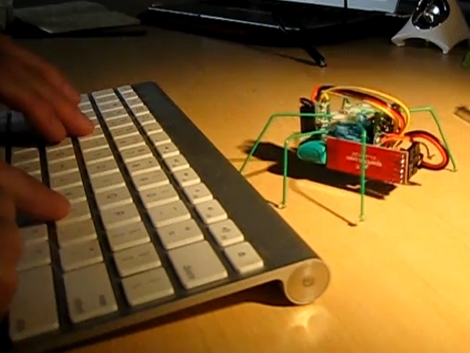3D holographic fog display

Some researchers in Japan are hard at work building a 3D volumetric fog display that would allow you to live out some of your Leia-related Star Wars fantasies. Using a column of fog and three projectors, they were able to create a display that looks three-dimensional from any angle. It might be a while before the technology hits your living room, so don’t clear your calendar just yet, Obi Wan. [via Neatorama]
The Claw – a three-fingered robotic gripper

Instructables user [AntMan] has been hard at work revising his robotic claw gripping mechanism. Laser cut from wood, this servo-driven claw can easily grasp small objects with little effort. We can’t wait to see someone build a version from milled aluminum!
Ben Heck’s retro Xbox 360

[Ben Heck] is at it again, and has recently given the Xbox 360 a sweet retro makeover. Taking inspiration from gaming consoles of the 70’s, he converted an Xbox 360 into a laptop-style portable (again), but this time with the look and feel of an old Atari 2600. Retro gamers rejoice, you can now get your Xbox on while enjoying the sweet simulated wood-grain you grew up with.
Rocket-based ice fishing notification system

What fun is ice fishing if you have to sit outside freezing your butt off? We’re assuming that was the driving thought behind [Mike’s] rocket-based ice fishing rig. A model rocket is attached to his fishing sledge, which is triggered when a fish is detected on the line. Using a low-tech detonator, the rocket lets him know it’s time to check the lines. Now only if we could get the fish to fillet themselves…
Case modding video series hits the web

The “Mod Men” is a fairly new web series that takes you out of the basement and into the garage for some professionally constructed case mods. Described as “American Chopper for geeks with a dash of This Old House”, the creators aim to showcase over-the-top case mods with a professional flair. They already have three episodes under their belt, all of which are available on their site.
















